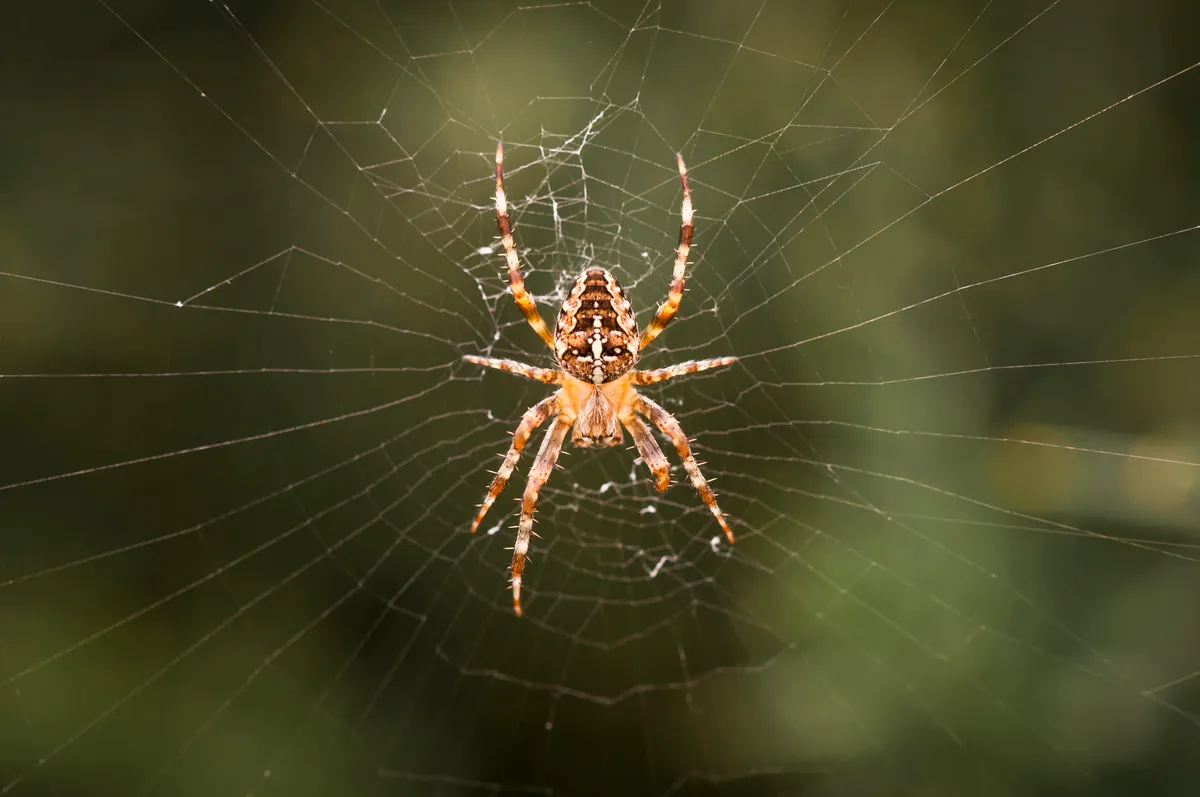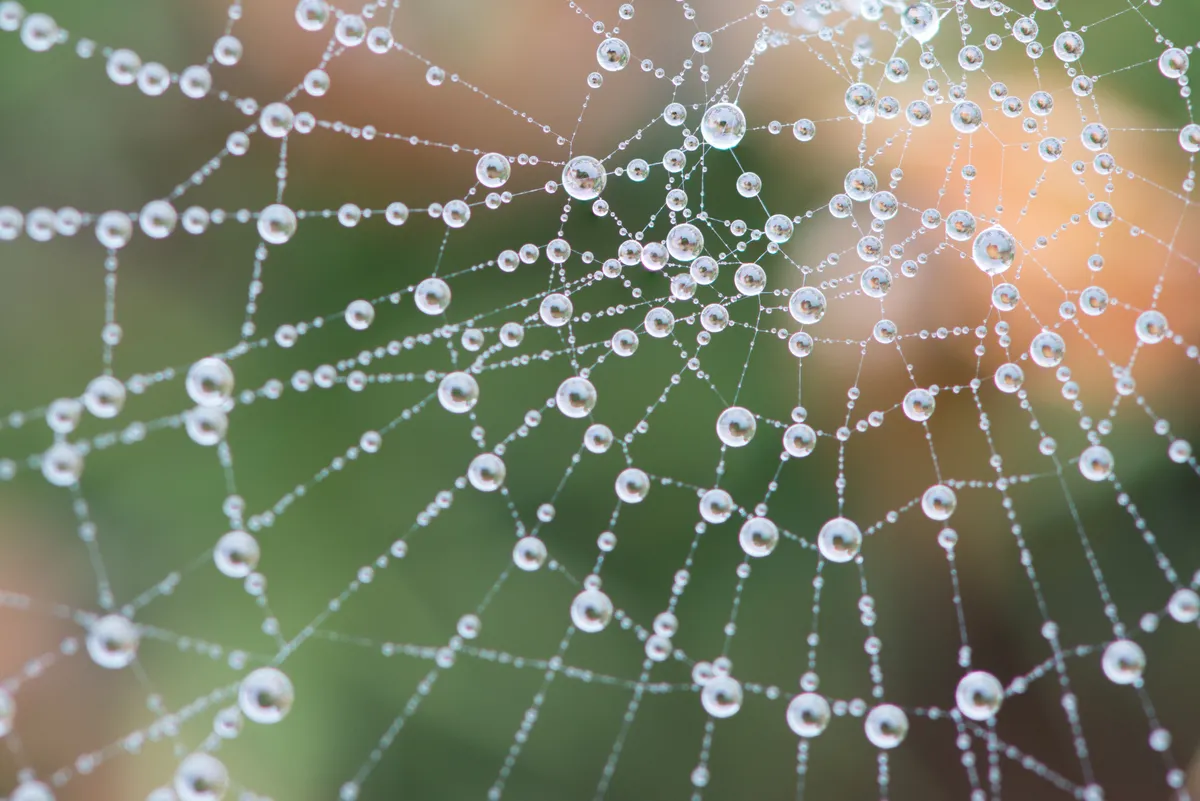All the spider facts you never knew - and were afraid to ask
Are spiders insects?
Spiders are not insects, but belong to a group called the arachnids. The Arachnida class also includes harvestmen, ticks, mites, scorpions and pseudoscorpions. Spiders differ from insects in having only two parts to the body, eight legs not six, six or eight eyes (two in insects) and spinnerets on their abdomens that produce silk.
How many spiders are there that you never see?
A study of an undisturbed grass field in Sussex found 5.5 million spiders per hectare.
How many spiders are there in the average house?
There don't seem to be any reliable statistics on the number of spiders in the average home, but there are plenty of spiders that will certainly enjoy living in your abode. These include the daddy-long-legs spider Pholcus phalangioides, which makes scruffy webs in the corners of rooms and cupboards, and the mouse spider Scotophaeus blackwalli, a sturdier, velvety species that prowls walls at night.
But the label 'house spider' is usually reserved for members of the genus Tegenaria, which lurk unseen in tube-webs until the autumn, when the leggy males scuttle around our abodes in search of the bulkier, more sedentary females.
Four species occur regularly in British houses, though they are tricky to tell apart, and arachnophobes will no doubt be delighted to know that a fifth now seems to be establishing itself here from mainland Europe.
- Biggest spiders in the world
- Biggest spiders in the UK: look for them in canals, gardens, ditches... and under your bed
How many eyes do spiders have?
People usually think of spiders having eight eyes, but that's not always true. While most spiders have eight eyes, there are some that only have six, and even some spiders that have fewer than six eyes. They always come in an even number, though - there are no cyclops spiders!
How do spiders make silk?
Spider silk starts out in the silk glands as a watery gel of long protein chains, which is funnelled down a gradually tapering tube. As the tube narrows, coatings are applied to the mixture (to provide stickiness and water resistance, for example) before it emerges through tiny spigots (devices that control the flow of liquid) on the spider’s spinnerets.
The gel solidifies only when stretched, so rather than being squeezed out like toothpaste, it is pulled out by a motor-like valve in each spigot.
A battery of silk glands produces a wide array of fibres with different properties used for specific tasks – for instance, a dragline, snare, web support or egg case.
Do all spiders build webs?
Only 17 of Britain’s 37 families of spiders use webs to capture their prey. These webs come in many different forms – from the much-admired orb webs of garden spiders and their relatives, to the much less welcome tangle webs of daddy-long-legs spiders.
Some types of webs are enduring structures – the often extensive funnel webs of large house spiders, for example, can last for years and accommodate a succession of different occupants.
By contrast orb webs, produced by just four families of British spiders, are more fragile. Wind and rain damage their structure, while the gluey coating on the spiral thread that ensnares flying insects is rendered ineffective by pollen and dust. As a result the webs are often rebuilt every night – an operation requiring the manufacture of some 20 metres of silk.

Why do some spiders eat their own webs?
Abandoning one web and building a new one every night would be pretty wasteful. Instead, some orb-web-spinners recycle the amino acids that make up the silk proteins by ingesting the silk as they systematically dismantle their damaged webs. Other species simply discard the old silk but one American species uses it to wrap its egg sac.
What do spiders use silk for apart from building webs?
Silk is used to build webs and egg sacs, wrap up prey, help dispersal of young and as safety lines when escaping predators. Water spiders also use silk to hold an underwater air supply.
Spiderlings disperse using silk. They travel to a high point, raise their abdomens and let out one or more strands. On warm days with rising air currents, the spiderlings are lifted into the air and carried away.

How many insects do spiders eat?
Spiders eat large numbers of insects. Exceptionally, one spider may take hundreds of very small flies in one day.
Edible prey is wrapped up in silk. The remains can often be seen attached to the web for those spider species that build them.
How do spiders catch their prey?
Crab spiders are sit-and-wait predators. They are often seen perched on garden flowers with their long front legs held out, crablike, to seize insects visiting the plant.
Wolf spiders are brown and furry, and on sunny days large numbers can be seen running through vegetation (on the edge of a pond, for instance) hunting prey.
On sunny walls, black-and-white striped jumping spiders can be seen stalking and pouncing on prey.
The very distinctive nocturnal woodlouse spider (Dysdera crocota), which has a reddish-brown body and legs, a pale abdomen and powerful fangs, hunts woodlice under stones and flowerpots.
If you want to be able to identify our most common spiders, take a look at our guide here:
Are there any insects that spiders won't eat?
Spiders avoid unpalatable insects. Burnet and cinnabar moths, for instance, lie still in spiders’ webs and are thrown out by the host.
Do spiders have teeth as well as fangs?
Like those of other arthropods, the mouth parts of spiders derive from primitive, ancestral limb-like structures.
Whereas legs and pedipalps (feelers analogous to insect antennae) still have several jointed segments, spider chelicerae are reduced to two portions, the basal block and the jack-knife fangs.
All spiders (except those in the obscure family Uloboridae) inject venom through the hollow fangs to kill their prey, which includes enzymes that start to liquidise the food.
The resulting pre-digested gloop is sucked up through the mouth orifice, between the chelicerae. Though some grinding occurs here, teeth don’t really come into it.
In insects, however, the jaws are each reduced to a single triangular (or tetrahedral) segment; they hinge at the outer rear corners and meet each other like the blades of scissors. The tips and inner edges of the jaws are often armed with teeth for slicing, cutting or grinding.
How do spiders mate and reproduce?
Mating usually involves some form of courtship. In web-building spiders, the male vibrates the web of the female; in hunting spiders, he uses his legs to signal to the female in a form of semaphore.
Eggs are laid in a silken sac. They start developing straightaway or remain dormant over the winter.
The egg sac may be left, guarded by the female or even carried or rolled around.
Wolf spiders carry their spiderlings around for a week. Some feed their young on liquified food, others kill prey and leave it for them.
Garden spiders each lay one egg sac in a sheltered spot and stay with it until they die in autumn. The spiderlings emerge early the following summer. They spin a web, then cluster into a ball on it. If disturbed, the youngsters scurry in all directions.
Do spiders eat each other?
Lots of spiders will happily eat other spiders and many will even cannibalise individuals of their own species. The mating routine of the nursery web spider is one of the most extreme examples of spider cannibalism.
When courting a female nursery web spider, the should always present a silk-wrapped fly to his prospective lover. If he doesn't, he will be rejected outright; and, according to new research, he won’t have anything to defend himself with if she tries to eat him.
Female nursery webs rarely attack suitors. But when they do, the male loses everything.
Unlike other cannibalistic spiders, such as black widows, females attack before mating not after it.
The male doesn’t even get the consolation that his body will nourish a female bearing his offspring.
Happily, the male can use the offering as a handy shield to ward off the female’s fangs if she does attack.
“The male holds it in his jaws, keeping it between himself and the female,” said Søren Toft of Aarhus University, Denmark. “We’ve seen aggressive females get their jaws caught in the gift.”
The male can then turn the situation to his advantage. “Once she hits the gift, the attack stops and it turns into a mating,” said Toft.